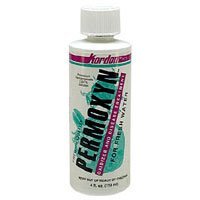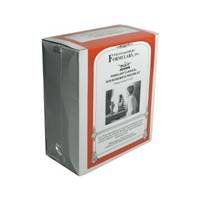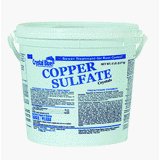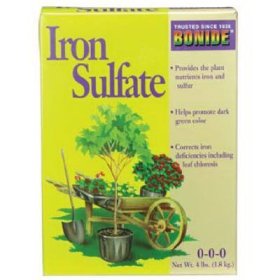Can copper sulphate, ferric chloride, and potassium permanganate be used as mordants?
Name: azkhan
Message: I want to know whether copper sulphate, ferric chloride, and potassium permagnate can be used as mordants or not? If yes, then kindly provide some information about them. Can you compare natural and synthetic dyes?
Potassium permanganate is not used as a mordant for hand dyeing. It is used industrially to discharge
(bleach out) indigo denim, but it is not recommended for this use at home
because it is very toxic. It is also a serious explosion hazard if you allow a
solution of potassium permanganate to dry up. See this discussion on the
Dye Forum for more information: "Discharge Indigo with
Potassium Permanganate".
is not used as a mordant for hand dyeing. It is used industrially to discharge
(bleach out) indigo denim, but it is not recommended for this use at home
because it is very toxic. It is also a serious explosion hazard if you allow a
solution of potassium permanganate to dry up. See this discussion on the
Dye Forum for more information: "Discharge Indigo with
Potassium Permanganate".
You may be thinking of a very different potassium compound which has, ill-advisedly, been used as a mordant with natural dyes. Potassium dichromate
is a known human carcinogen. Chromium is commonly available in two forms, the
trivalent form and the hexavalent form. Potassium dichromate is in the
hexavalent form. Hexavalent chromium has been responsible for many serious
injuries and deaths due to industrial exposure. You should not bring this
substance into your home, though you could use it in a properly equipped
laboratory. It is very possibly illegal in your community for you to dispose of
it in your trash or as wastewater. In contrast, chrome-complexed premetallized
dyes such as some of the Lanaset dyes contain the much less dangerous trivalent
form of chromium, and at much lower concentrations. (See "What
does it mean when a dye is premetalized with chromium or some other heavy
metal? What are the risks of exposure from using a dye that is premetalized with
chromium?".)
Potassium dichromate
is a known human carcinogen. Chromium is commonly available in two forms, the
trivalent form and the hexavalent form. Potassium dichromate is in the
hexavalent form. Hexavalent chromium has been responsible for many serious
injuries and deaths due to industrial exposure. You should not bring this
substance into your home, though you could use it in a properly equipped
laboratory. It is very possibly illegal in your community for you to dispose of
it in your trash or as wastewater. In contrast, chrome-complexed premetallized
dyes such as some of the Lanaset dyes contain the much less dangerous trivalent
form of chromium, and at much lower concentrations. (See "What
does it mean when a dye is premetalized with chromium or some other heavy
metal? What are the risks of exposure from using a dye that is premetalized with
chromium?".)
Copper sulfate is also known as blue vitriol. It is used with logwood in dyeing blue, and
with cutch, improving lightfastness while imparting a greenish
tinge. Copper sulfate is poisonous and can be deadly when swallowed,
and can also be hazardous to the environment, so use it with care and dispose of
it correctly. Here is a link to a good article on the toxicity
of copper sulfate.
is also known as blue vitriol. It is used with logwood in dyeing blue, and
with cutch, improving lightfastness while imparting a greenish
tinge. Copper sulfate is poisonous and can be deadly when swallowed,
and can also be hazardous to the environment, so use it with care and dispose of
it correctly. Here is a link to a good article on the toxicity
of copper sulfate.
Ferric chloride can be used as a mordant almost interchangeably with ferrous sulfate, but
is considered superior for mordanting silk. Iron works to dull down colors; iron
contamination in alum will ruin bright reds. Iron and tannins combined with
logwood makes a good black. Ferric chloride is less toxic than copper
sulfate, but can be deadly when swallowed, so, as with all mordants and
most dyes, you must take appropriate safety precautions, and keep it well away
from children. The Label Hazard Warning required for ferric chloride is as
follows: "DANGER! CORROSIVE. CAUSES BURNS TO ANY AREA OF CONTACT. HARMFUL IF
SWALLOWED OR INHALED. AFFECTS THE LIVER." Here is a link to an MSDS for ferric
chloride.
but
is considered superior for mordanting silk. Iron works to dull down colors; iron
contamination in alum will ruin bright reds. Iron and tannins combined with
logwood makes a good black. Ferric chloride is less toxic than copper
sulfate, but can be deadly when swallowed, so, as with all mordants and
most dyes, you must take appropriate safety precautions, and keep it well away
from children. The Label Hazard Warning required for ferric chloride is as
follows: "DANGER! CORROSIVE. CAUSES BURNS TO ANY AREA OF CONTACT. HARMFUL IF
SWALLOWED OR INHALED. AFFECTS THE LIVER." Here is a link to an MSDS for ferric
chloride.
The only really safe mordants for natural dyes are alum and tannin. Of course they are not safe to swallow,
but they are not deadly. Beginning dyers should not use copper sulfate or ferric
chloride unless they have been trained in the safe use of toxic chemicals; even
experienced dyers should not use potassium dichromate in their homes, where
inadvertent exposures may contaminate living areas.
for natural dyes are alum and tannin. Of course they are not safe to swallow,
but they are not deadly. Beginning dyers should not use copper sulfate or ferric
chloride unless they have been trained in the safe use of toxic chemicals; even
experienced dyers should not use potassium dichromate in their homes, where
inadvertent exposures may contaminate living areas.
For more discussion comparing natural with synthetic dyes, see the following pages:
• "About Natural Dyes"
• "Aren't natural dyes safer than synthetic dyes?"
• "Natural Dyes Are Not Superior to Synthetic Dyes"
• "Fixing natural dyes from walnuts, goldenrod, sassafras and poke weed in
cotton - do I use urea or soda ash?"
• "A Science Fair Project on Artificial Dyes Versus Natural Dyes "
• "What's the difference between mordants and other chemical assistants used in dyeing?"
• "Natural Dyes", on the Dye Forum
(Please help support this web site. Thank you.)
Message: I want to know whether copper sulphate, ferric chloride, and potassium permagnate can be used as mordants or not? If yes, then kindly provide some information about them. Can you compare natural and synthetic dyes?
Potassium permanganate
 is not used as a mordant for hand dyeing. It is used industrially to discharge
(bleach out) indigo denim, but it is not recommended for this use at home
because it is very toxic. It is also a serious explosion hazard if you allow a
solution of potassium permanganate to dry up. See this discussion on the
Dye Forum for more information: "Discharge Indigo with
Potassium Permanganate".
is not used as a mordant for hand dyeing. It is used industrially to discharge
(bleach out) indigo denim, but it is not recommended for this use at home
because it is very toxic. It is also a serious explosion hazard if you allow a
solution of potassium permanganate to dry up. See this discussion on the
Dye Forum for more information: "Discharge Indigo with
Potassium Permanganate".You may be thinking of a very different potassium compound which has, ill-advisedly, been used as a mordant with natural dyes.
 Potassium dichromate
is a known human carcinogen. Chromium is commonly available in two forms, the
trivalent form and the hexavalent form. Potassium dichromate is in the
hexavalent form. Hexavalent chromium has been responsible for many serious
injuries and deaths due to industrial exposure. You should not bring this
substance into your home, though you could use it in a properly equipped
laboratory. It is very possibly illegal in your community for you to dispose of
it in your trash or as wastewater. In contrast, chrome-complexed premetallized
dyes such as some of the Lanaset dyes contain the much less dangerous trivalent
form of chromium, and at much lower concentrations. (See "What
does it mean when a dye is premetalized with chromium or some other heavy
metal? What are the risks of exposure from using a dye that is premetalized with
chromium?".)
Potassium dichromate
is a known human carcinogen. Chromium is commonly available in two forms, the
trivalent form and the hexavalent form. Potassium dichromate is in the
hexavalent form. Hexavalent chromium has been responsible for many serious
injuries and deaths due to industrial exposure. You should not bring this
substance into your home, though you could use it in a properly equipped
laboratory. It is very possibly illegal in your community for you to dispose of
it in your trash or as wastewater. In contrast, chrome-complexed premetallized
dyes such as some of the Lanaset dyes contain the much less dangerous trivalent
form of chromium, and at much lower concentrations. (See "What
does it mean when a dye is premetalized with chromium or some other heavy
metal? What are the risks of exposure from using a dye that is premetalized with
chromium?".)Copper sulfate
 is also known as blue vitriol. It is used with logwood in dyeing blue, and
with cutch, improving lightfastness while imparting a greenish
tinge. Copper sulfate is poisonous and can be deadly when swallowed,
and can also be hazardous to the environment, so use it with care and dispose of
it correctly. Here is a link to a good article on the toxicity
of copper sulfate.
is also known as blue vitriol. It is used with logwood in dyeing blue, and
with cutch, improving lightfastness while imparting a greenish
tinge. Copper sulfate is poisonous and can be deadly when swallowed,
and can also be hazardous to the environment, so use it with care and dispose of
it correctly. Here is a link to a good article on the toxicity
of copper sulfate.Ferric chloride can be used as a mordant almost interchangeably with ferrous sulfate,
 but
is considered superior for mordanting silk. Iron works to dull down colors; iron
contamination in alum will ruin bright reds. Iron and tannins combined with
logwood makes a good black. Ferric chloride is less toxic than copper
sulfate, but can be deadly when swallowed, so, as with all mordants and
most dyes, you must take appropriate safety precautions, and keep it well away
from children. The Label Hazard Warning required for ferric chloride is as
follows: "DANGER! CORROSIVE. CAUSES BURNS TO ANY AREA OF CONTACT. HARMFUL IF
SWALLOWED OR INHALED. AFFECTS THE LIVER." Here is a link to an MSDS for ferric
chloride.
but
is considered superior for mordanting silk. Iron works to dull down colors; iron
contamination in alum will ruin bright reds. Iron and tannins combined with
logwood makes a good black. Ferric chloride is less toxic than copper
sulfate, but can be deadly when swallowed, so, as with all mordants and
most dyes, you must take appropriate safety precautions, and keep it well away
from children. The Label Hazard Warning required for ferric chloride is as
follows: "DANGER! CORROSIVE. CAUSES BURNS TO ANY AREA OF CONTACT. HARMFUL IF
SWALLOWED OR INHALED. AFFECTS THE LIVER." Here is a link to an MSDS for ferric
chloride. The only really safe mordants
 for natural dyes are alum and tannin. Of course they are not safe to swallow,
but they are not deadly. Beginning dyers should not use copper sulfate or ferric
chloride unless they have been trained in the safe use of toxic chemicals; even
experienced dyers should not use potassium dichromate in their homes, where
inadvertent exposures may contaminate living areas.
for natural dyes are alum and tannin. Of course they are not safe to swallow,
but they are not deadly. Beginning dyers should not use copper sulfate or ferric
chloride unless they have been trained in the safe use of toxic chemicals; even
experienced dyers should not use potassium dichromate in their homes, where
inadvertent exposures may contaminate living areas.For more discussion comparing natural with synthetic dyes, see the following pages:
• "About Natural Dyes"
• "Aren't natural dyes safer than synthetic dyes?"
• "Natural Dyes Are Not Superior to Synthetic Dyes"
• "Fixing natural dyes from walnuts, goldenrod, sassafras and poke weed in
cotton - do I use urea or soda ash?"
• "A Science Fair Project on Artificial Dyes Versus Natural Dyes "
• "What's the difference between mordants and other chemical assistants used in dyeing?"
• "Natural Dyes", on the Dye Forum
(Please help support this web site. Thank you.)
Posted: Saturday - December 29, 2007 at 10:03 AM
Follow this blog on twitter here.
Quick Links
- All About Dyes & Dyeing Top -
- Top of this blog -
- FAQ -
- The Dye Forum -
- How to Tie Dye - How to Batik -
- Books - Toys - Plants -
- Top of this blog -
- FAQ -
- The Dye Forum -
- How to Tie Dye - How to Batik -
- Books - Toys - Plants -
More in this category:
- -
Statistics
Total entries in this blog:
Total entries in this category:
Published On: Aug 29, 2012 02:49 PM
Total entries in this category:
Published On: Aug 29, 2012 02:49 PM